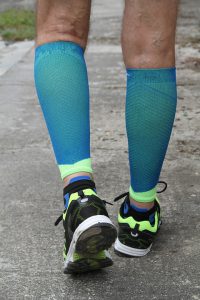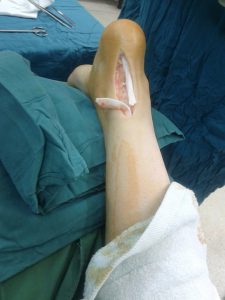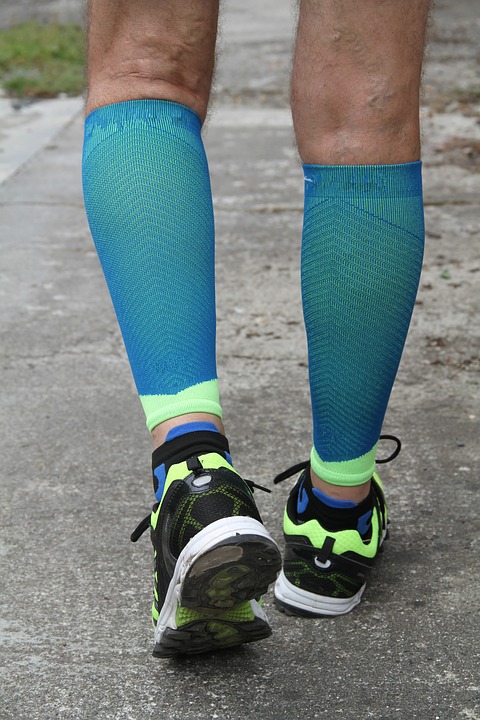 Even though the Achilles Tendon is the strongest and thickest of all the tendons in the human body it is still subject to injuries, and as a dancer, you want to try to prevent Achilles Tendon Injuries.
Even though the Achilles Tendon is the strongest and thickest of all the tendons in the human body it is still subject to injuries, and as a dancer, you want to try to prevent Achilles Tendon Injuries.
What Is An Achilles Tendon?
The Achilles Tendon is a fibrous piece of tissue and connects the calf muscle (gastrocnemius) to the heel bone. The Achilles Tendon’s function in ballet dancing is to pull the heel up to enable you to point your foot and to releve up onto Demi Pointe or even pointe.
The Achilles Tendon also softens the impact on your foot when landing after your jumps.
Other functions include standing on your toes, walking, running and jumping. Did you know that the Achilles Tendon can withstand up to 10 times a person’s body weight?
Because the Achilles tendon is subject to a person’s entire body weight with each step we take, it is no wonder that this tendon is subject to so many injuries, like Achilles Tendonitis. Here are a few of the more common Achilles Tendon injuries and how to prevent Achilles tendon injuries.
Achilles Tendonitis
You would normally have Achilles Tendonitis if you heard a creaking sound in your calf, or felt pain above the heel. If it hurts to flex and point, the Achilles Tendon may be inflamed. It will also hurt to press down on the back of your calf muscle with your finger. Some people are more prone to Achilles Tendonitis, especially people with thin tendons or feet that bear more weight on the inside of the foot.
To prevent Achilles Tendon injuries it would be wise for a person whose feet pronate inwards to get a good pair of orthotic inserts made for their shoes.
To prevent Achilles tendonitis, a ballet dancer has to stretch her calf muscles regularly. Strengthening the muscles that control landings also helps. This includes the lower back, abdominals, pelvis, legs and feet.
Avoid dancing on concrete or very hard floors at all costs and be sure to have adequate shock absorption in your shoes. Take extra care when doing your demi plies that you do not roll at the ankles. When landing after jumps, also make sure to put your heels down before taking off again.
If you leave Achilles tendonitis unchecked, it can become a long-term problem. At the first sign of discomfort, modify your activity levels and apply ice twice a day until the pain has lessened. Make sure you stretch gently and try to avoid prolonged standing, running, jumping and any other movements that pull on the Achilles Tendon.
If ballet dancers tie their pointe shoe ribbons too tightly, this also creates friction and compression of the mid-Achilles. It might help to elasticise your pointe shoe ribbons by removing a section of the ribbon and placing a two to three-inch lengths of elastic in-between where the ribbon meets the Achilles Tendon. Commercially elasticized ribbons are also available for this purpose.
If you have pain above the heel, it may not be Achilles tendonitis. You could also be suffering from posterior impingement of the ankle joint, which is a condition caused by a bone pressing on the soft tissue when the foot points. It could be confused with Achilles tendonitis, as it creates pain in the same area, but an X-ray will help to tell the difference.
Achilles Tendon Rupture
 Another more serious injury is an Achilles Tendon rupture, which is a partial or complete tear. This normally comes on suddenly with a characteristic popping sound and is debilitating.
Another more serious injury is an Achilles Tendon rupture, which is a partial or complete tear. This normally comes on suddenly with a characteristic popping sound and is debilitating.This is not so common in ballet dancers, and happens more with runners, as it usually happens with sudden eccentric stretching like sprinting.
Once the Achilles tendon is ruptured, the individual will not be able to run, climb up the stairs, or stand on his toes. The ruptured Achilles tendon prevents the power from the calf muscles to move the heel.
Normally the individual will need to undergo surgery, depending on the severity of the rupture.
Swelling and bruising around the calf muscle and heel will occur.
Ballet dancers and runners, look after your bodies, prevent Achilles tendon injuries and your body will turn work hard for you!

